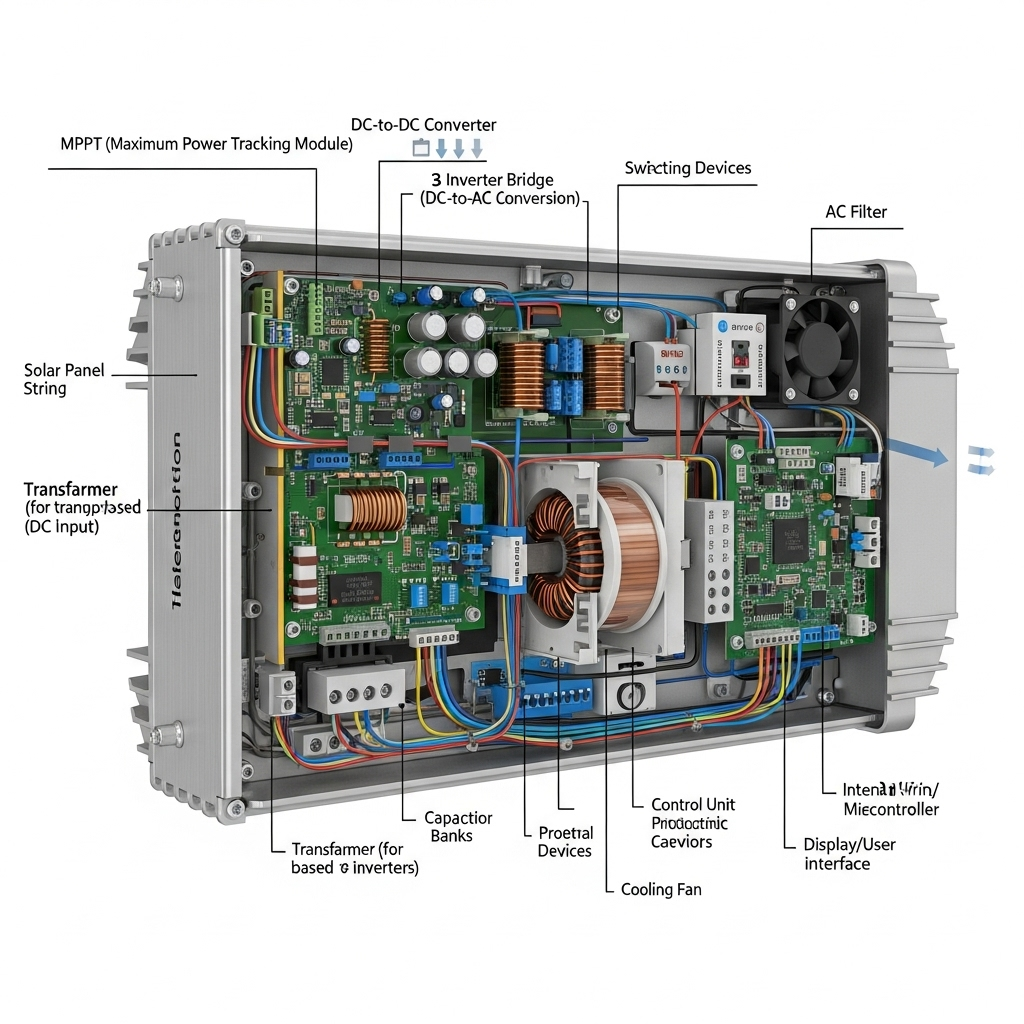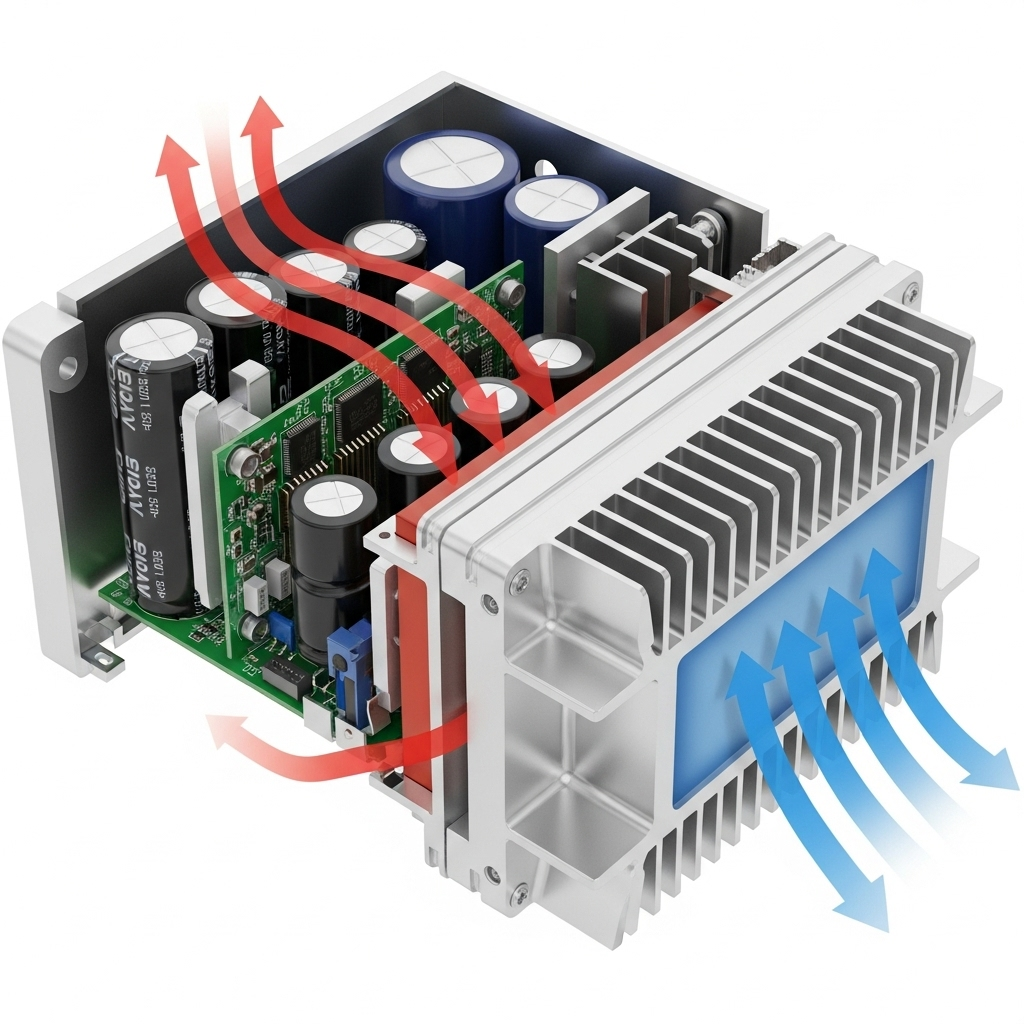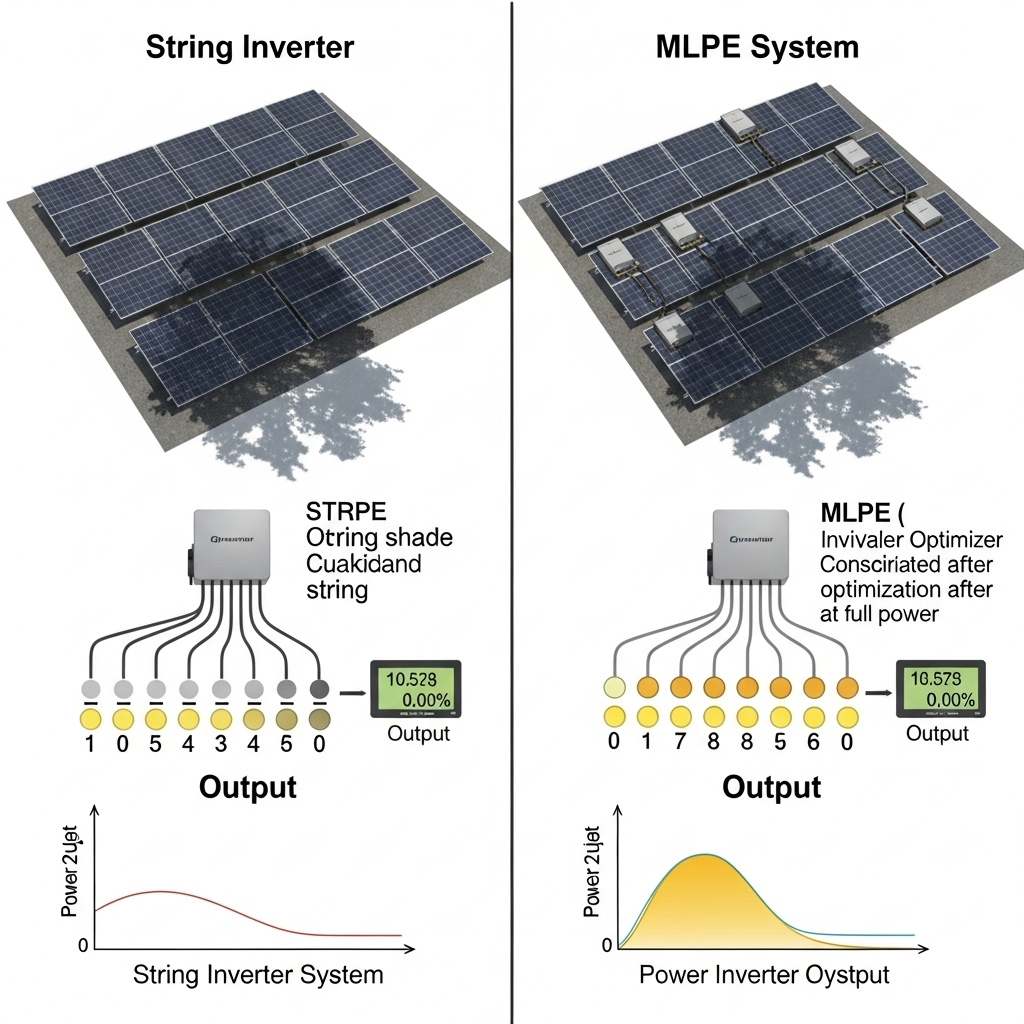A solar inverter is the heart of a photovoltaic system, diligently converting the direct current (DC) from your panels into alternating current (AC) for your home. To protect its sensitive internal components from damage, an inverter will intentionally reduce its power output when conditions become too stressful. This self-preservation mechanism is known as derating. While many system owners are aware of thermal derating due to high ambient temperatures, two other critical environmental factors often go unnoticed: altitude and the inverter's IP enclosure rating.
The Impact of Altitude on Inverter Performance
Operating a solar system in a mountainous region presents unique challenges that go beyond just the terrain. The elevation itself has a direct and measurable effect on your inverter's ability to perform optimally.
Why Thinner Air Means More Heat
At higher altitudes, the air becomes less dense. This 'thinner' air is less effective at transferring heat away from the inverter's heat sinks through convection. Because the cooling efficiency is reduced, the inverter's internal components run hotter than they would at sea level, even under the same load. To prevent overheating, the inverter's control system will trigger derating sooner. Most inverters are rated for full operation up to a specific altitude, typically around 2,000 meters (6,560 feet), before derating begins.
Quantifying Altitude Derating
The exact derating factor varies by manufacturer and model, but a common rule of thumb is a power output reduction for every 100 meters above the specified non-derating altitude. For example, some models expect a performance loss of 0.5% for every 100 meters (330 ft) above 2,000 meters. It's not just about power output; the maximum permissible DC voltage may also need to be reduced at higher altitudes because the air's lower density diminishes its electrical insulation properties, increasing the risk of electrical discharges.
| Altitude | Estimated Power Reduction |
|---|---|
| 2,500 m (8,202 ft) | 2.5% - 5% |
| 3,000 m (9,842 ft) | 5% - 10% |
| 3,500 m (11,483 ft) | 7.5% - 15% |
Note: This table provides a general estimation. Always consult the manufacturer's technical datasheet for precise derating curves.
Practical Steps for High-Altitude Installations
If you are planning an installation at a high elevation, the first step is to check the inverter's datasheet for its specific altitude derating specifications. To compensate for the inevitable power loss, you may need to oversize the inverter. For instance, if your load requires 8 kW at 2,500 meters and the inverter derates by 10% at that altitude, you would need an inverter with a capacity closer to 9 kW to ensure sufficient power. Enhanced ventilation and providing shade are also critical to mitigate cooling issues.

How IP Enclosure Ratings Influence Thermal Management
The Ingress Protection (IP) rating is a standard that defines how well an electrical enclosure is sealed against the intrusion of solids (like dust) and liquids (like water). While a high IP rating is excellent for durability, it creates a thermal management challenge.
Decoding IP Ratings
An IP rating consists of two digits. The first digit (0-6) indicates protection against solid particles, and the second digit (0-9) indicates protection against liquids. For example, an IP65-rated inverter is completely dust-tight (the '6') and can withstand low-pressure water jets from any direction (the '5'). This makes it suitable for most outdoor installations.
The Trade-Off: Protection vs. Heat Dissipation
The very features that give an inverter a high IP rating—tight seals and no ventilation openings—also trap heat inside the enclosure. An IP65 or IP66 inverter is essentially a sealed box. This design prevents effective air exchange, relying instead on passive cooling through external heat sinks. In contrast, an indoor-rated inverter (e.g., IP21) often incorporates fans and vents for active cooling, allowing it to dissipate heat much more effectively. The trade-off is clear: superior environmental protection comes at the cost of thermal efficiency. Understanding this balance is essential, as a thorough analysis of solar storage performance metrics shows that effective thermal management is directly linked to long-term energy yield and system reliability.
Selecting the Right IP Rating for Your Environment
For outdoor installations exposed to rain, dust, or humidity, a high IP rating (IP65 or greater) is non-negotiable for ensuring the longevity of the device. Manufacturers design their thermal management systems with this in mind, but the physical limitations remain. Therefore, the installation location becomes even more critical. Placing a sealed, high IP-rated inverter in a shaded area with ample airflow can make a significant difference in preventing thermal derating. In arid regions, a high IP rating is also crucial to protect against dust, which can cause significant issues as noted in IRENA's report on Quality infrastructure for renewables facing extreme weather conditions.
Synergistic Effects and Mitigation Strategies
The challenges of altitude and IP ratings do not exist in isolation. In many real-world scenarios, they combine to create a compounded effect on inverter performance.
When Altitude and IP Rating Combine
Consider installing a passively cooled, IP65-rated inverter at an altitude of 3,000 meters. This unit faces a double jeopardy for derating. The thin air is already inefficient at removing heat from the external heat sink, and the sealed enclosure prevents any internal heat from escaping easily. This combination can lead to significant power reductions, especially during periods of high solar irradiance and warm ambient temperatures. Such installations require meticulous planning and may necessitate substantial inverter oversizing to meet performance targets.
Advanced Thermal Management Solutions
To combat these issues, manufacturers employ sophisticated thermal designs, including oversized heat sinks and phase-change materials. The need for precise control over power output, including managing ramp rates and potential curtailment, is a key topic in grid integration studies. As detailed in IRENA's Grid Codes for Renewable Powered Systems report, effective thermal management is the foundation for this level of advanced control. Reduced output from derating directly impacts the financial viability of a solar project, a central theme in any Electricity Storage Valuation Framework.
Best Practices for System Design
To ensure your system performs as expected, always follow these best practices:
- Consult the Datasheet: This is the most critical step. Always review the manufacturer's technical specifications for detailed derating curves related to temperature and altitude.
- Prioritize Airflow: Never install an inverter in a confined, unventilated space. Ensure there is adequate clearance around the unit, especially its heat sinks, to allow for natural air circulation.
- Avoid Direct Sun: Installing an inverter in direct sunlight can dramatically increase its operating temperature, leading to premature derating. A shaded, north-facing wall (in the northern hemisphere) is often an ideal location.
- Size Appropriately: When designing your system, account for all potential derating factors. Calculate the expected power loss from high temperatures and altitude, and select an inverter that can still meet your energy needs after these reductions.
A Broader Perspective on Performance
Maximizing your solar investment goes beyond simply choosing components with high nameplate ratings. It requires a clear understanding of how environmental factors like altitude and enclosure design will impact real-world performance. By carefully considering the installation site and consulting technical datasheets, you can properly size your inverter and design a system that delivers reliable power for years to come, regardless of the conditions.
Frequently Asked Questions
Do all inverters derate at high altitudes?
Most inverters have a specified altitude limit, often 2,000 meters, above which performance derating applies. The exact specifications vary, so checking the product's datasheet is the only way to be certain. Below this specified limit, no altitude-related derating is expected.
Is a higher IP rating always better for an inverter?
Not necessarily. A higher IP rating provides better protection against dust and water, which is vital for outdoor installations. However, this robust sealing often compromises heat dissipation. The 'best' IP rating is a balance between the environmental protection required for the installation location and the need for effective thermal management.
How can I calculate the total derating for my inverter?
Total derating is a combined effect of multiple factors, primarily ambient temperature and altitude. Manufacturers provide derating curves in their technical manuals that chart power output against these variables. You must use these charts to estimate the combined impact based on your specific site conditions.
Can adding an external fan to an IP65 inverter help?
Directing an external fan at the heat sink of a passively cooled IP65 inverter can improve convective cooling and may help reduce thermal derating. However, this will not change the derating caused by high altitude, which is due to lower air density. Ensure any such modification does not void the manufacturer's warranty or compromise the enclosure's seal.





Leave a comment
All comments are moderated before being published.
This site is protected by hCaptcha and the hCaptcha Privacy Policy and Terms of Service apply.